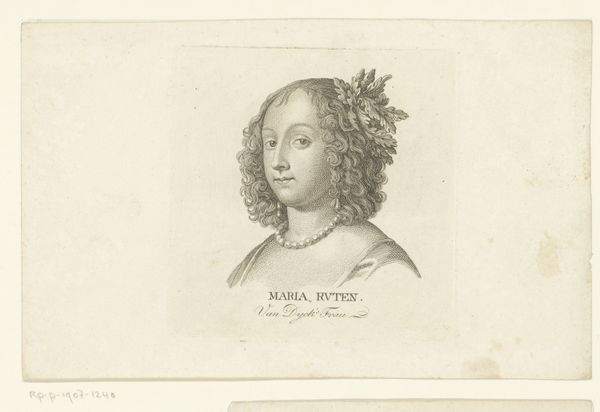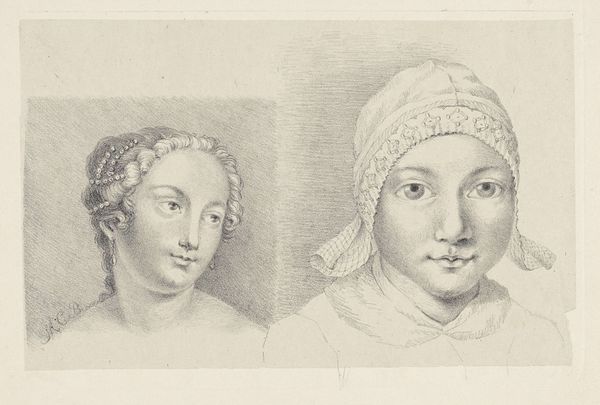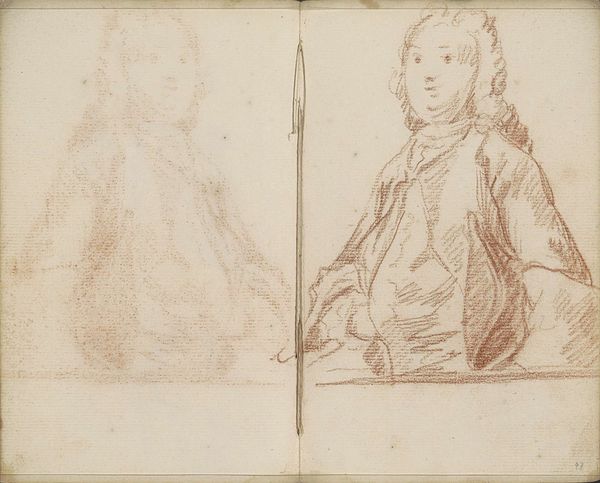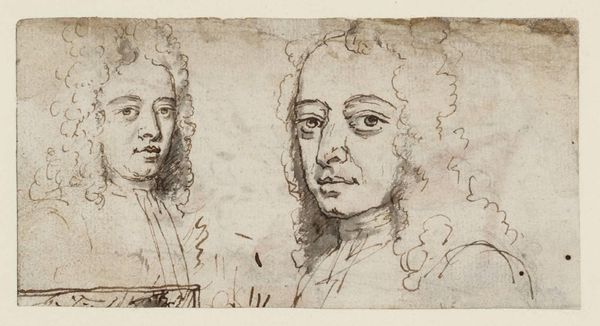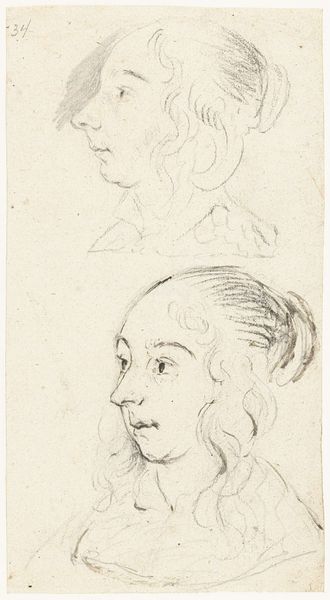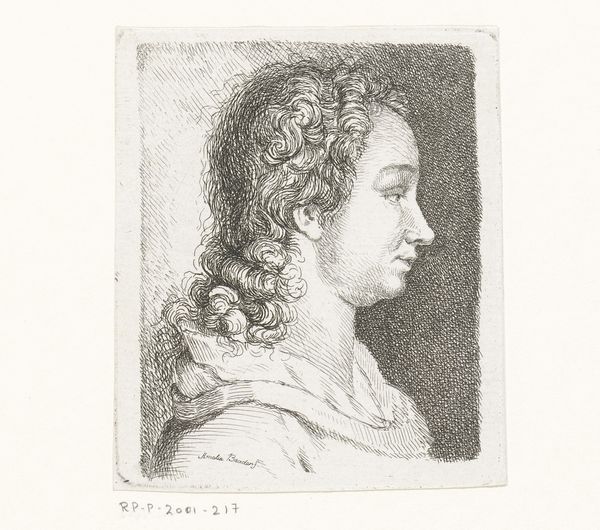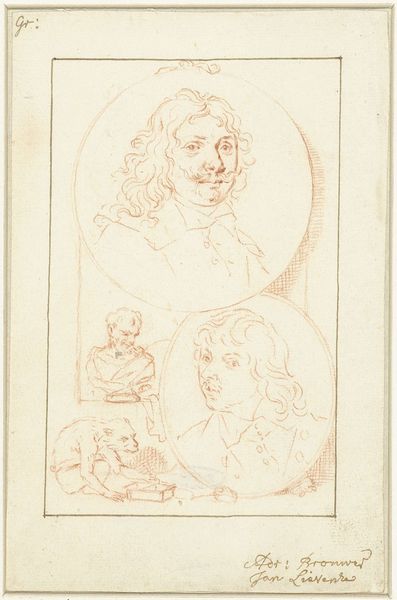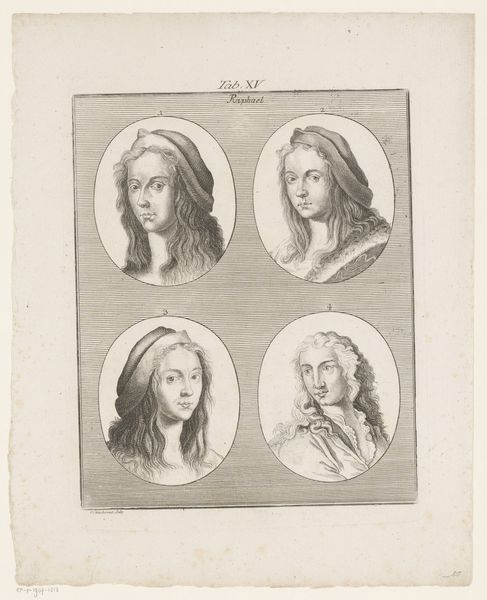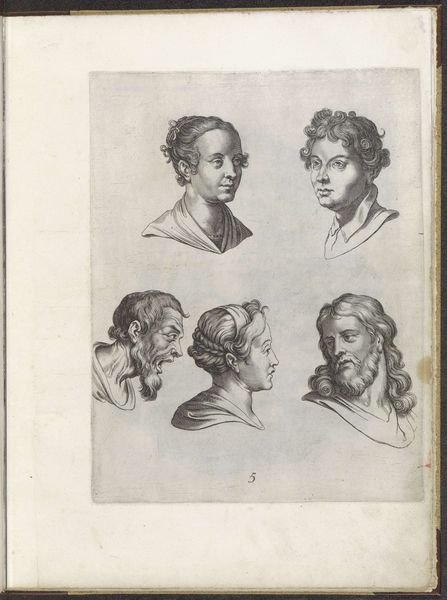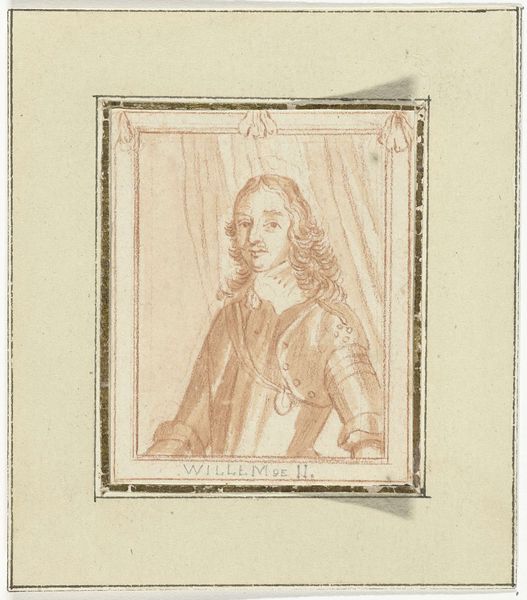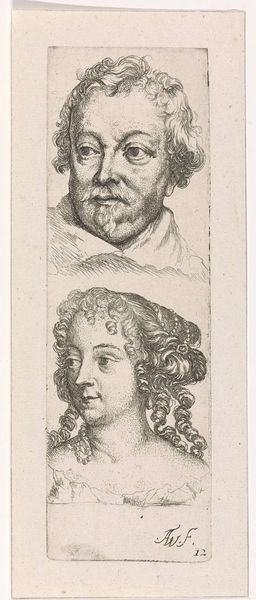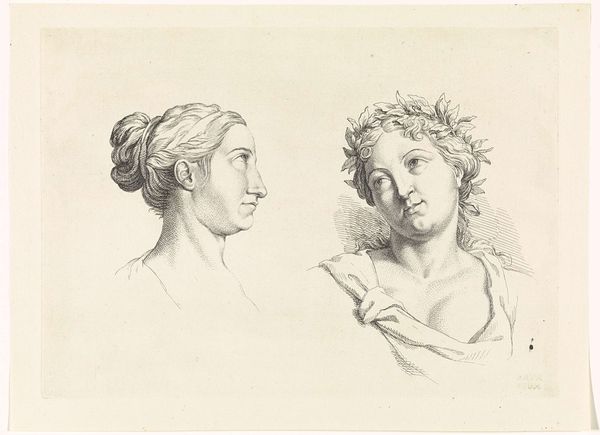
drawing, paper, graphite
#
portrait
#
drawing
#
baroque
#
dutch-golden-age
#
paper
#
group-portraits
#
graphite
Dimensions: height 243 mm, width 360 mm
Copyright: Rijks Museum: Open Domain
Curator: Here in Gallery 12, we have "Two Portraits of Women" by Gesina ter Borch, a drawing created sometime between 1643 and 1690. It's done in graphite on paper and part of the Rijksmuseum collection. Editor: The immediacy of it strikes me—like catching glimpses of these women. There’s something very direct and honest in the presentation, even across such a divide in stylistic rendering. Curator: Well, Gesina ter Borch came from an artistic family, and her skill as a draftswoman certainly afforded her opportunities to create portraits of those within her immediate social circles. It seems clear she created them, most probably, just for the intimate world of the family album. Editor: Yes, the woman on the right especially – the darker, blue toned one – has a pearl at the center of her chest. The pearl is a really old symbol – purity and all that. It gives this portrait some nice depth to the imagery that is pretty universal even today. But also those corkscrew curls of hers have so much youthful vibrancy! It clashes intriguingly with the somewhat more formal aspect of her clothing and jewelry. Curator: We should remember portraiture then was not merely about capturing likeness; it was also a potent tool for projecting social status and constructing identity. Those elements of adornment were carefully considered and carry significant weight in understanding the sitter’s position within Dutch society. Even something like the different color of paper becomes important, especially to a young woman making art and moving within circles that likely disapproved. Editor: True, but the symbolism still persists. What is also very noticeable is the oval and rectangular designs around each woman. The contrast definitely draws the eye and heightens this tension, setting them both apart and suggesting how social expectation can often "frame" someone's own image. Curator: Absolutely. Ter Borch was a keen observer, and her art provides a fascinating insight into the lives of women during the Dutch Golden Age. By looking at those material possessions depicted within this picture – or perhaps also the different shapes that highlight each face – one can also understand much of their social context. Editor: It makes you consider what it really means to “see” someone. Both literal sight, and also to perceive who they really are beyond representation. A lovely piece, rich in layered ideas!
Comments
No comments
Be the first to comment and join the conversation on the ultimate creative platform.
